What? |
|---|
|
The Shikoku Pilgrimage (四国遍路) crosses the whole island, passing 88 temples, just as it is told that Kobo Daishi (弘法大師), the founder of Shingon Buddhism did. The local Economic Research Institute has partitioned the pilgrimage in several two to three day walking routes to make it a little bit more accessible for foreign tourists. I was invited to test route 7: the area associated with Kobo Daishi, spanning from temple nr. 65 (Sankakuji 三角寺) to nr. 75 (Zentsuji 善通寺). This first day I would be walking from Iyo-Mishima Station (伊予三島駅) in Ehime Prefecture (愛媛県), passing temple 65 and subtemple nr. 14 (Tsubaki-do 椿堂) to arrive at my home for the night in the village of Sano, Miyoshi City, Tokushima Prefecture. |
Where? |
|
The start of this first day lies at Iyo-Mishima Station on the JR Yosan Line (JR予讃線). The station is connected with the island’s bigger cities such as Takamatsu (高松) and Matsuyama (松山), but also with mainland Okayama (岡山) with limited express train. The route of this first day will take you from Iyo-Mishima Station in Ehime Prefecture to the foot of Mount Unpenji (雲辺寺山) in Tokushima Prefecture (徳島県). 
|
URL |
| Shikoku Henro Trail |
Getting off at Iyo-Mishima station I was immediately surprised. By the small size of the station, yes, but more about the nostalgic smell that emanated from the surroundings. An air that can only be perceived in rural areas and which transported me for a few seconds back to the time when I lived in beautiful Matsumoto.
If this was a prelude of what was to come, I couldn’t wait to get started!
Unfortunately, the aroma in the air started to change pretty soon. On one hand I blame the factories in the neighborhood of which I am sure emanated a kind of manure smell. On the other hand, more towards the mountains, the ginkgo trees are in full bloom, and it’s well known in Japan that when you step on their fruits and crush them (I wanted to write 'nuts', but it sounds so painful), they stink a whole lot more than any factory nearby.
That’s nature for you!
The walk towards temple nr. 65, Sankakuji, was pretty straightforward. The path follows gently swaying “inaka” (countryside) roads, offering a glimpse of rural life on a rather remote island, and offering the occasional view of the coastline. Bit by bit the road goes up, along rice paddies, short stretches of forest and the occasional friendly local. As for fellow pilgrims, along the way I only met one couple of hikers. They were vehemently talking (yelling) about diarrhea, so they must have thought I didn’t understand any Japanese. That, or more realistically speaking given their accent, they must have been from Kansai where it really doesn’t matter who can hear about your intestinal issues.
Arriving at Sankakuji I bought my very first goshuincho- or in this case the special Shikoku pilgrimage one called nokyocho - and immediately had it signed and stamped. The temple was actually very pretty with green moss growing everywhere, complementing the many cherry trees that obviously weren’t in bloom this autumn season. A big Buddha statue overlooked the main hall in which the chants of a praying monk had a hypnotizing effect on me. I talked a bit with the monk at the temple’s office and he adviced against visiting the somewhat remote subtemple Senryuji on grounds of time restraints. I was very early to go on to my end destination of the day, but a little too late to include Senryuji in my itinerary.
If there’s one issue I have with the Henro, is that there are very little time indications, making it harder to plan ahead.
After a short break I plowed on to the next temple of the day, the subtemple Tsubaki-do, officially called Jofukuji. This time I followed a winding mountain road. I entered this trance you sometimes get when walking. Completely absorbed in thought, completely alone, only getting out of it to take the occasional picture.
I arrived quickly at the rather eccentric Tsubaki-do, a small temple with vivid colors and which looks a bit amateurish, albeit in a good sense.
Until now most of the way had been paved but nowhere that was bothersome. I had thoroughly enjoyed my first experience with the Shikoku pilgrimage, despite the smell of manure (but thanks to the talk of diarrhea, because that was frankly hilarious).
What followed was unfortunately one long piece of drab to my destination and hotel of the day, the Okada Minshuku (岡田民宿). Why? Because the path just followed a national road with lots of truck traffic. I couldn’t wait for it to end, picking up the pace in risk of arriving way too early at my roof for the night.
But I really couldn’t stand it.
Knowing there was even a tunnel I had to pass, I looked in my (fantastic) pilgrimage route guidebook for some alternative. I decided to get off the road just before the tunnel and bypassing it by taking a detour along the Sakaime Pass (境目峠). I immediately bumped into a half collapsed house/grocery store, which in itself is not very amusing, but which guaranteed that I wouldn’t see much traffic on this piece of trail. An arrow towards my local hotel pointed in the direction of a very overgrown path that would take me over the small hill. Spiders and other multiple legged creatures all tried very hard to enter my ears, mouth and nose, but despite that I enjoyed the trail again!!
Leaving the forest I walked into a very small village that still shows signs of guidance for and hospitality towards pilgrims, but this quaint town has been literally undermined by the tunnel, and it’s clear that soon the last inhabitants will have either left or passed away.
The town was pretty, but I could imagine how it used to look like. What must have been beautifully stepped rice paddies located in the small valley surrounded by steep forested hills are now overgrown and without owner. The very few paddies and farm fields that are left are starting to show signs of negligence.
It saddens me to say, but this village will soon be no more, probably forcing all pilgrims through the tunnel, the route that most already take. But for now I was able to enjoy this piece of nostalgic path.
Again I arrived at that national road, this time made even more awful by road works, forcing me to walk on the actual car lane. Luckily this was only just for a few minutes, as the Okada Minshuku was now very nearby and needed me to turn onto a small road.
All in all I enjoyed this first day thanks to my decision to take a little detour and end the day just as it begun, on a positive note with a nice rural smell.
Shikoku Pilgrimage Part 1 - Iyo-Mishima to the Foot of Mount Unpenji
Shikoku Pilgrimage Part 2 - Heading for Kanonji
Shikoku Pilgrimage Part 3 - Six Temples in One Day
Shikoku Pilgrimage Part 4 - Going Into the Mountains
Shikoku Pilgrimage Part 5 - The Oldest Stretch on the Shikoku Pilgrimage
Shikoku Pilgrimage Part 6 - Following the Shoreline to Yakuoji
>>More pictures<< |


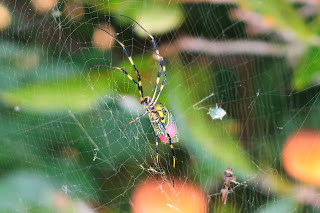
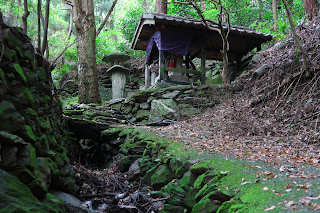
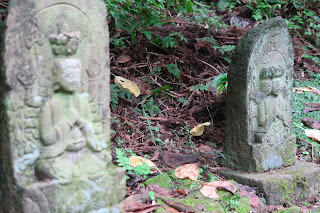

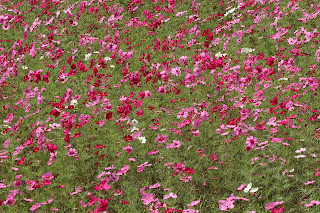
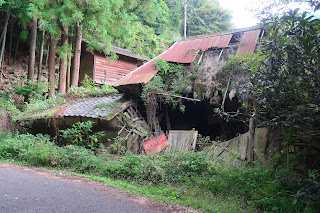












No comments:
Post a Comment